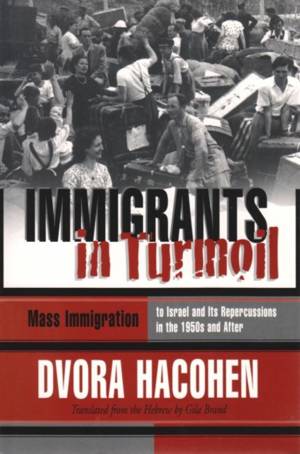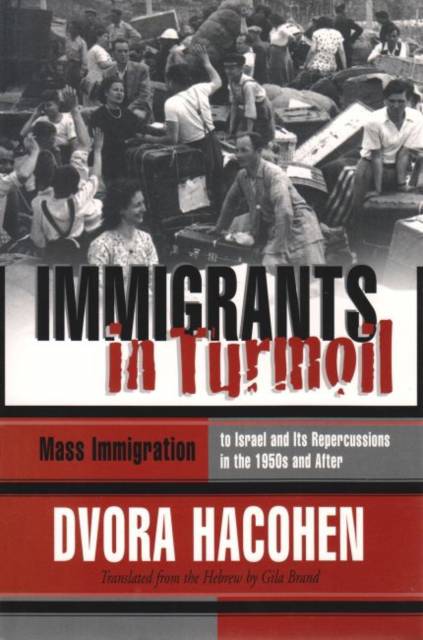
En raison d'une grêve chez bpost, votre commande pourrait être retardée. Vous avez besoin d’un livre rapidement ? Nos magasins vous accueillent à bras ouverts !
- Retrait gratuit dans votre magasin Club
- 7.000.000 titres dans notre catalogue
- Payer en toute sécurité
- Toujours un magasin près de chez vous
En raison de la grêve chez bpost, votre commande pourrait être retardée. Vous avez besoin d’un livre rapidement ? Nos magasins vous accueillent à bras ouverts !
- Retrait gratuit dans votre magasin Club
- 7.000.0000 titres dans notre catalogue
- Payer en toute sécurité
- Toujours un magasin près de chez vous
Immigrants in Turmoil
Mass Immigration to Israel and Its Repercussions in the 1950s and After
Dvora Hacohen
84,95 €
+ 169 points
Format
Description
May 1948: a dramatically reborn Israel put out the call for Jews to return to their new homeland. Between 1948 and 1951, over one million Jews from disparate nations across the world converge upon Israel, doubling its population and creating a unique, exhilarating socio-cultural quilt. But ramifications upon Israeli society and nationhood would be profound and long lasting.
The new immigrants who were granted citizenship and the right to vote upon their arrival in Israel had an immense impact on Israeli politics. The relationship that developed then between immigrants and veteran Israelis left their mark on society and culture, creating fault lines that have deepened over the years: the ethnic rift between Jews of European extraction and those from Islamic countries, the rupture between religious and secular Jews, and the socio-economic polarization that ensued from these rifts. Most stunningly, Dvora Hacohen uncovers revelations about the inconsistency between grand ambitions to activate an "ingathering of exiles" and the nation's ability to handle such an event. She argues that the tidal wave of immigration in 1948 was not spontaneous as supposed, and Jewish agency executives and government officials favored gradual selective immigration over the open door policy that prevailed. She also explores the fate of Palestinian Jews and the roles played by various internal and global factions and adverse Arab neighbors.Spécifications
Parties prenantes
- Auteur(s) :
- Editeur:
Contenu
- Nombre de pages :
- 342
- Langue:
- Anglais
- Collection :
Caractéristiques
- EAN:
- 9780815629696
- Date de parution :
- 01-04-03
- Format:
- Livre relié
- Format numérique:
- Genaaid
- Dimensions :
- 163 mm x 240 mm
- Poids :
- 612 g

Les avis
Nous publions uniquement les avis qui respectent les conditions requises. Consultez nos conditions pour les avis.






